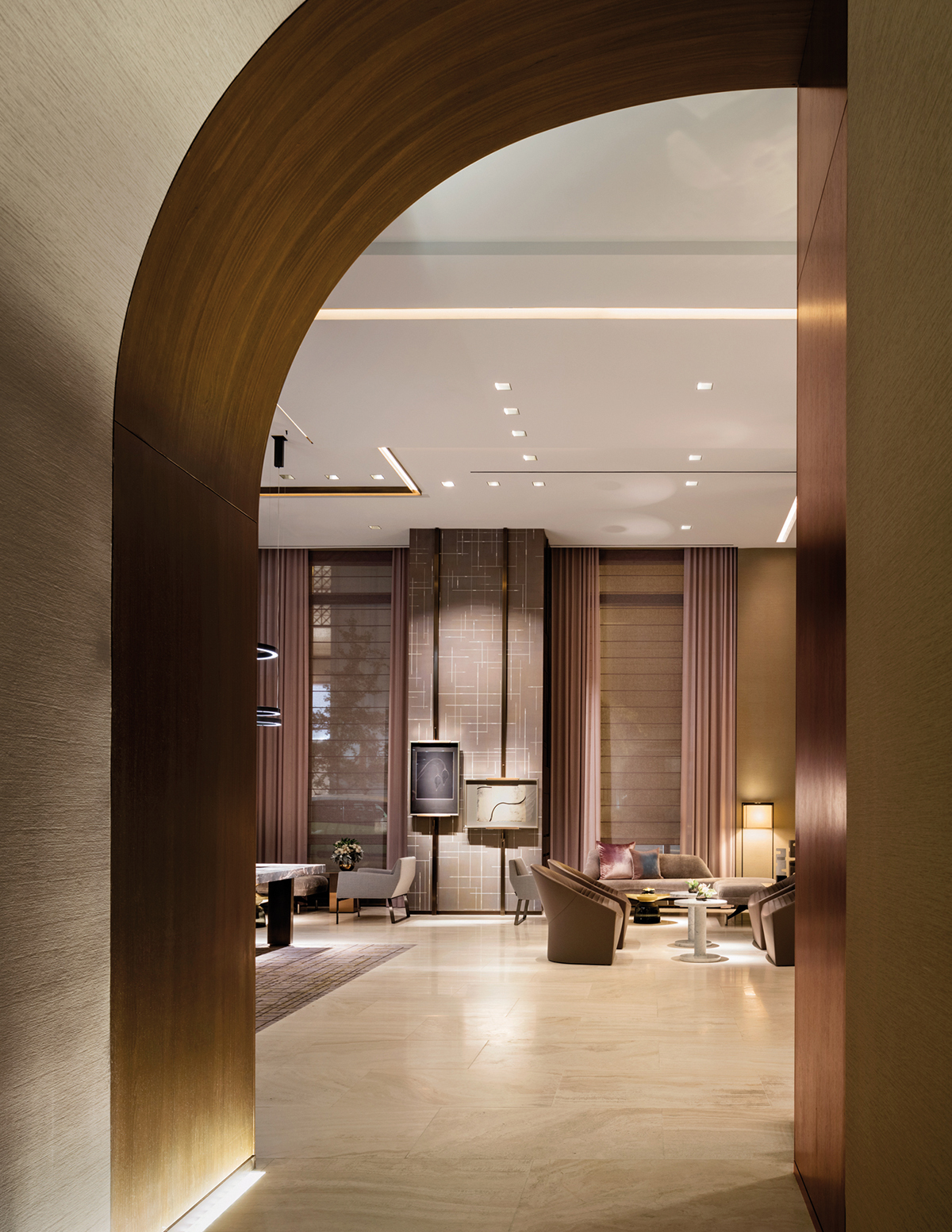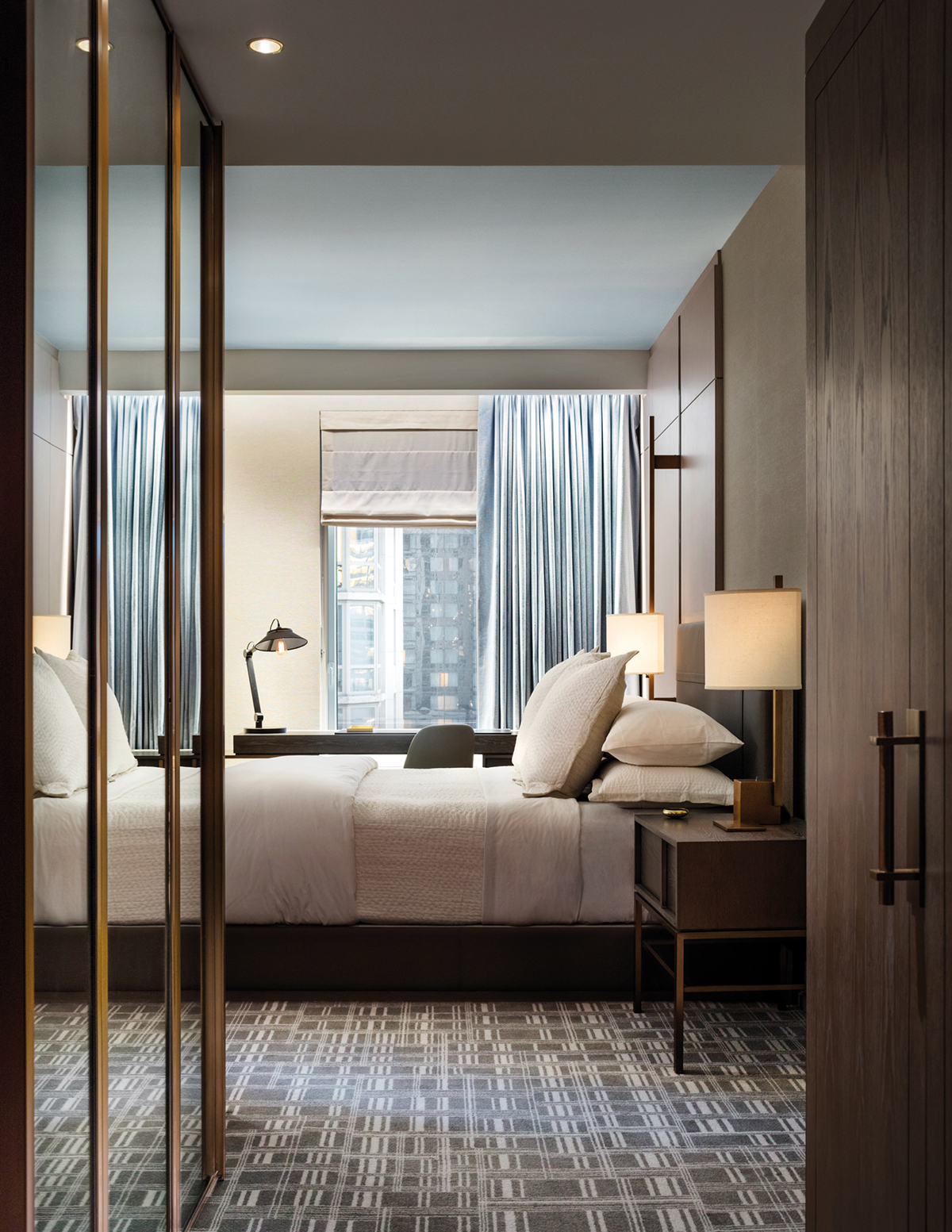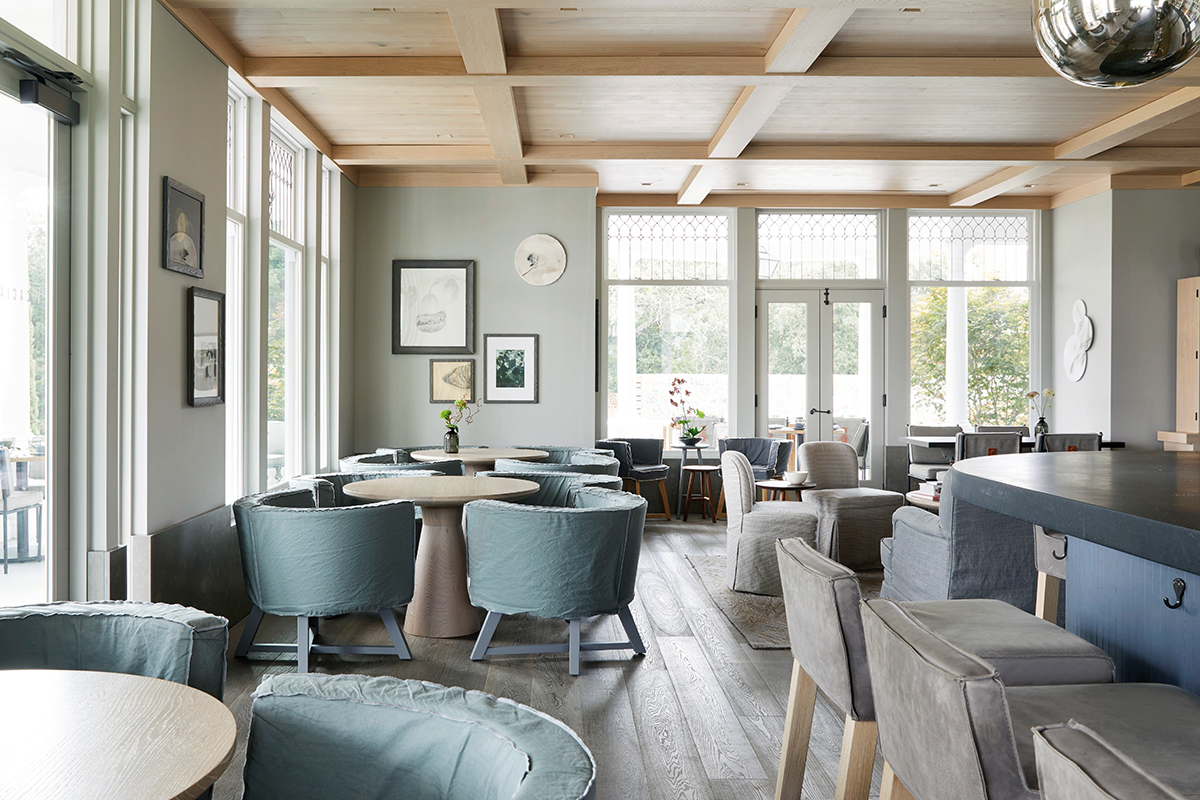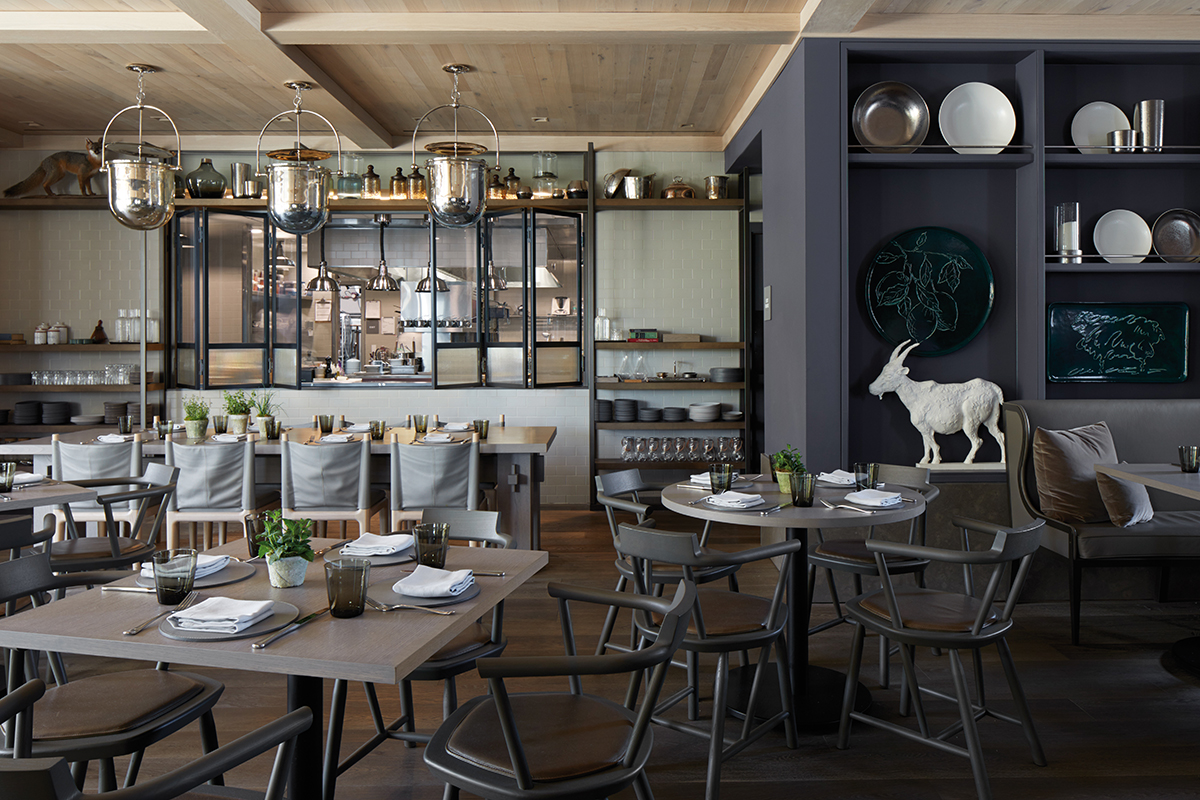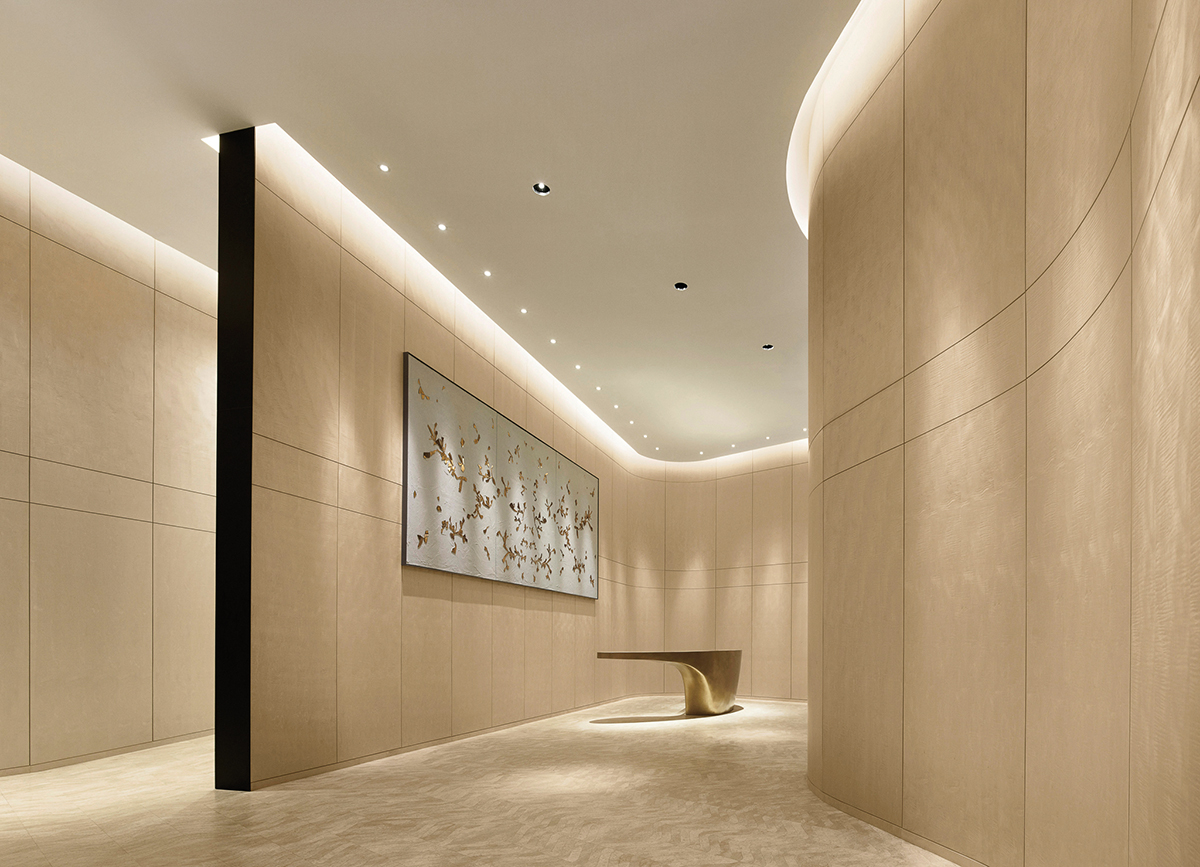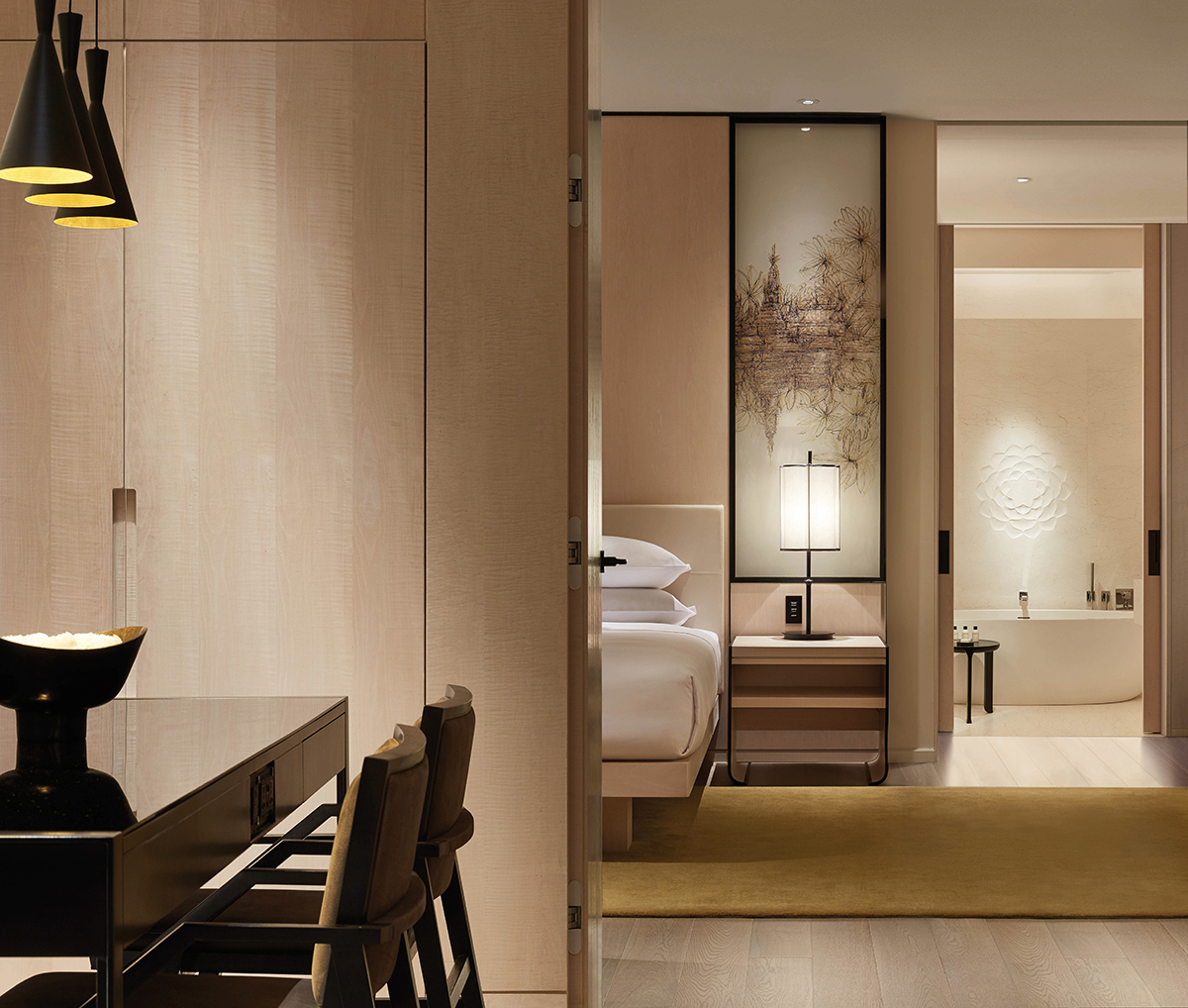From sharing a common space when they first started to work after graduating from Ryerson University, Toronto, to two design studios in Canada and the USA. George Yabu’s and Glenn Pushelberg’s professional path has truly sky rocketed since the early 80s, an ascending parabola on a directive between Toronto and New York. An unwaning characteristic of this ascent is the fire which continues to motivate them, clearly palpable when conversing with the duo. A passion for their work and continuous challenges just waiting to be designed. Globally acclaimed and multiple prize winning interior designers in the retail and hotelier sector, they embrace a holistic approach when developing projects for hotels, residences and shops, to achieve balance, emotive quality and all-round concept, resulting in facilities which remain contemporary and never succumb to trends. In 2017 alone, the duo designed seven hotels which have already opened or are opening soon: Park Hyatt Bangkok, Las Alcobas St Helena Napa Valley, Viceroy Dubai, Four Seasons Kuwait, The Edition Times Square, and two Moxy facilities in New York.
What do you remember about the outset of your professional collaboration?
Glenn Pushelberg. We enjoyed working, we have always designed for the sheer satisfaction of doing so, we put our minds to all sorts of things, a shoe shop, a dry cleaner’s, for the sheer enjoyment of the design process. After a while we strove to take on better projects.
George Yabu. Profit was not our priority, we wanted to give the best of ourselves. This may seem naive, but our design ethos was based on passion coupled with the multiple possibilities of design. We also designed a photocopy shop, at a time when they still existed. It was supposed to be the most functional and beautiful photocopy shop ever seen.
What was your first experience in the hotelier sector?
GY. It was a stroke of luck and a veritable challenge for us, extremely stimulating, although we were somewhat disorientated because we made our debut in the sector by working simultaneously on two different hotels, the Four Seasons, Tokyo, with just 57 rooms, and the W Hotel Times Square, with 500 rooms. The difficult thing was that we had the same budget for both hotels and the W Hotel client told us we had a year to complete it. We managed it in 15 months, we were three months late because of the September 11 attacks in 2001.
GP. It took us three years to finish the Four Seasons in Tokyo. However, in this way we learnt a lot and fast.
How has the hospitality/hotelier sector changed since that first experience?
GP. For years we’ve been working for luxury brands such as the Four Seasons, Park Hyatt, with renowned characteristics, but I think that over the last five years the sector has become fragmented, pandering to specific types of clientele. A lot is changing and we continue to design hotels because every new assignment is a challenge, with objectives that are defined with increasing specificity by a specific clientele, requiring design solutions which are just as specific, with a different approach each time to attract a well-defined target. We believe that this is the future of hospitality. For example, we’re working for Equinox, the fitness centre brand which now wishes to open a hotel (editor’s note: New York, Hudson Yards, expected to open in 2019), which responds to the lifestyle of its own clientele. As we got to grips with the project, we realised that it would make sense to focus on a narrow clientele segment which wishes to do sport and maintain a healthy lifestyle, even when they are travelling. The two projects for Moxy are another example, a sort of “starter hotel brand” (editor’s note: in New York, a new Marriot Group brand), with 12 sq m rooms for which we designed wall-suspended furnishings, ready for use if actually needed.
Which projects leave you greater freedom for experimentation?
GP. In the hospitality sector resorts give the most freedom. We’re working on projects in Sicily and Montenegro which require extensive research into culture, architecture, local history, to create a modernity which is appropriate for the context, capable of improving the customers’ experience by giving them something new. The retail sector is also suitable for experimentation; however, it is difficult to find clients who are willing to innovate. People are shifting their views on “why do I shop?”. I shop because it’s fun, entertaining, unique and not all retailers understand that point, so we’re keen to do more retail and to find the right client.
You are often associated with the word luxury, what does luxury mean for you?
GY. According to the latest Luxury Society report, we are now in a post luxury era. There is a level of luxury and exclusivity which people aspire to, and not everyone is able to reach, but there is also an idea of effortless luxury: you want it, but it’s less obvious, maybe a little less gloss, a little less shine, and I think that’s what people are looking for, it is not so obvious today.
GP. We have a resort project in Montenegro, to me it’s kind of that post luxury. It feels luxurious but has nothing to do with luxury. For example, room furnishings are matt, rough, blackened, hewn, it doesn’t feel manufactured, it feels luxurious, but it is not. We used macramé, which is part of the location’s culture and belongs to the mountains. To me it’s like getting the character of the place together, or the luxury of space, a sensation of quality given by the use of original materials or different techniques.
You’re famous for your interiors. But what is the relationship between interior design and the architecture which embraces it?
GY. In the hospitality world, the hotel experience is more important than the envelope of the architecture, and in fact sometimes the interiors tend to re-inform the envelope, often we have to fix the architecture when it is not suitable for the hotel experience.
GP. In one of our resort projects the building was brand new, with extremely clean lines, large windows, lacquered doors, but we wanted to change the entrance area to create a sense of coming home, coming to something that has more life to it than a commercial building. Inside we focused on local artisan techniques, the location’s style, screens, plays on natural light in the lobby, reflections of screenings on floors to create an immaterial rug. In hospitality, you need to capture emotional qualities, which is about layering and about being sensitive to something that’s more emotional than intellectual.
GY. We like to think of our concepts are fuller, more complete and having an impact. What’s the message you’re giving to the customer at the outset of their hotel experience? Maybe that’s why a lot of our projects have lasted a long time.
In fact, I was about to ask about how your interiors hardly age.
GP. We’re not interested about trends, but we are interested in creating a point of view, and we are conscious that a hotel does have a poise, it is that balance that we’re looking for in our projects to give some character but also some longevity, some uniqueness. However, there is a difference compared to 10 years ago and we believe that a hotel must have “more layers, more moments”, much more than in the past, the ah ah moments, which distinguish the hotel.
What relationship do you have with your customers?
GY. The client is the hotel owner, but there are also other parties involved, such as the hotelier brand, and sometimes there is a lack of agreement. It’s a tricky tension. The brand suggests how the hotel must be, the developer or the owner controls the budget, and the project can be considered a success when you manage to satisfy both parties.
GP. What counts for us designers is to lead and listen. For example, in the case of consolidated brands, 5 stars, such as the Four Seasons, we believe that they must think of their future customers, because it will take 5-10 years before the hotel is finished. We try to objectify the process, we challenge clients, sometimes fighting this battle for a long time. The challenge is fighting for what we believe is the right answer, and then giving up when we think others have better answers.
